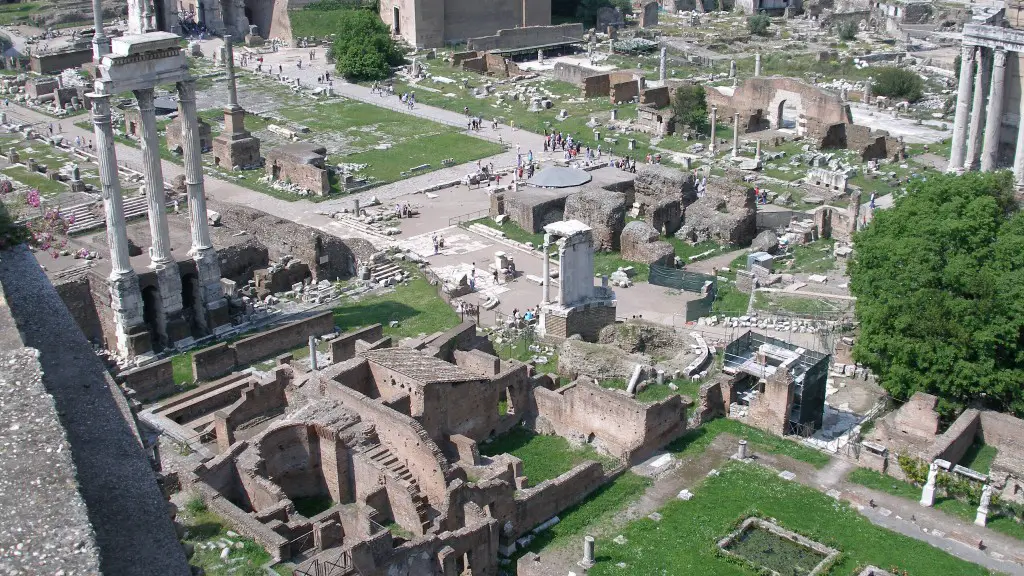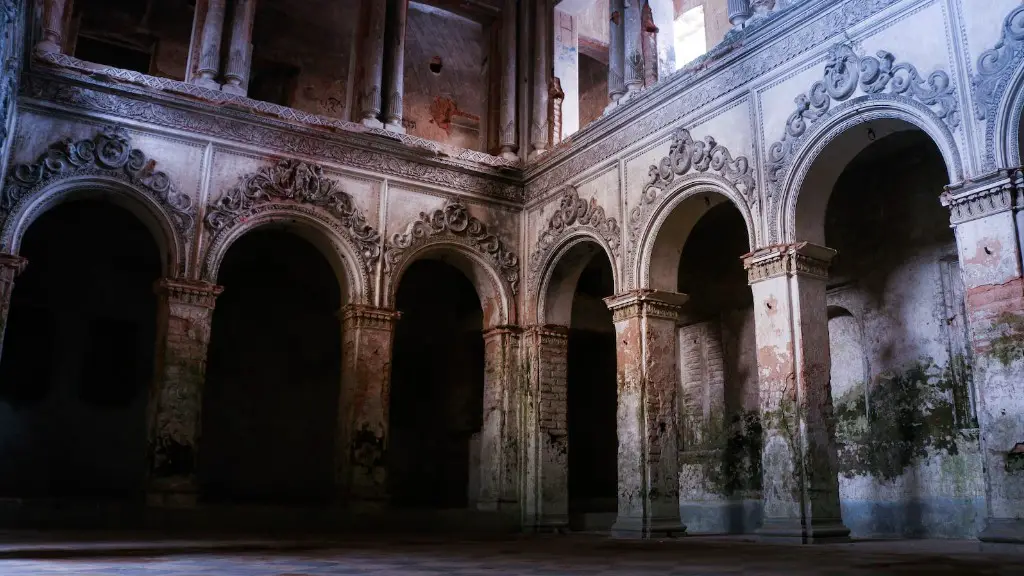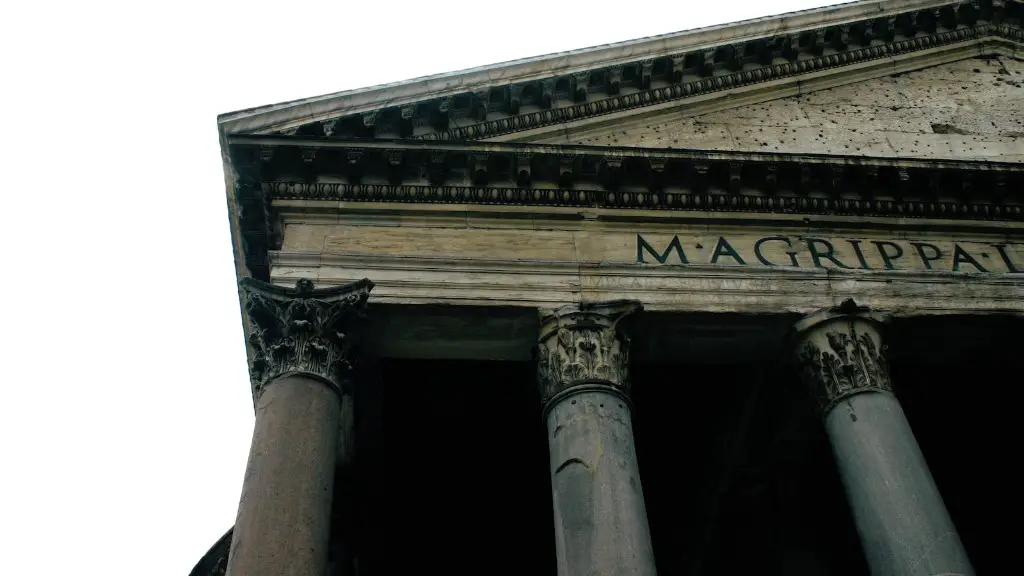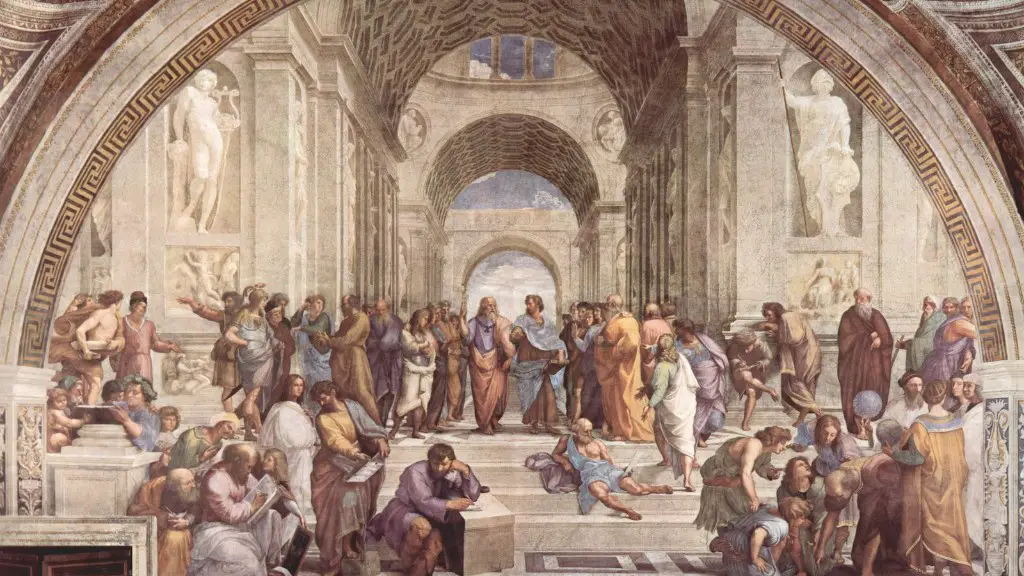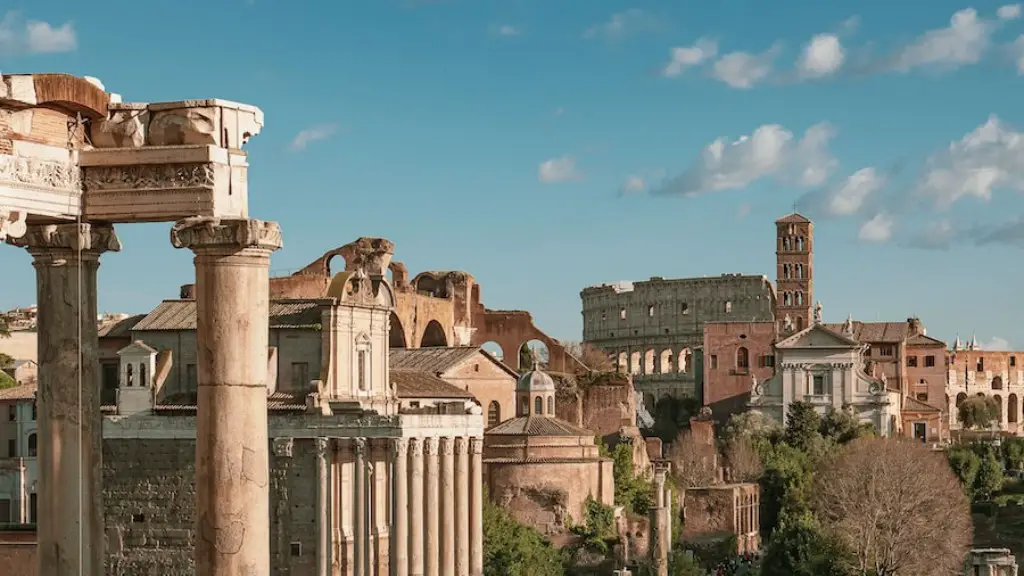When the topic of Ancient Rome is brought up, it often invokes images of grandiose architecture, chariot races, and art. Yet, for all its technological advancements, one of the most outstanding contributions that Ancient Rome made was its food culture. In fact, Ancient Roman cuisine was of great importance in the development of Italian cuisine, and continues to shape modern Italian food.
Though simple by today’s standards, Ancient Roman food was mostly based on a variety of grains, vegetables, fruits, and meats that were readily available to ancient citizens. Grain was the staple food of the Roman diet, and the most common type of grain used was wheat, used to make bread. This was supplemented by legumes such as beans, chickpeas, and lentils.
Fish was a regular part of Ancient Roman cuisine, but not as common as other proteins. It was available to people living near large bodies of water, but could be salted and eaten in other parts of the Roman Empire. Meats were considered a luxury item, with beef, lamb, pork, and fowl being the most common. Seafood and shellfish were also popular. Fruits, such as apples, figs, and dates were a source of vitamins, minerals, and natural sweetness, while vegetables like cabbage and turnips provided essential vitamins and minerals.
Olive oil was the primary condiment used in Ancient Rome, and was often used to cook or flavor food. Vinegar and spices such as coriander, cumin, and pepper were also common. Wine was widely consumed in Ancient Rome, and most meals included a glass of white or red wine. Honey was used to sweeten food, as well as to produce a variety of dessert dishes.
Ancient Roman food is renowned for its variety and creativity. Chefs constructed their dishes with a keen understanding of their ingredients, and meals typically contained a balance of flavors, textures, and colors. For example, a dish might include a tart element like quince or grapes, a sharp element like vinegar or anchovy, and a sweet element like honey or figs, creating a complex flavor profile.
Though Ancient Roman food has largely faded from memory, its influence can be seen in modern Italian cuisine. Many dishes such as pasta, pizza, and risotto have their roots in Ancient Roman cooking. The Italian penchant for experimentation and innovation also owes much to Ancient Rome, as does the use of olive oil and fresh vegetables. The importance of Ancient Roman cuisine cannot be overstated, and the contributions it made to modern Italian food remain evident even today.
Grain And Legumes
Grain was the staple food of the Roman diet, and the most common type of grain used was wheat. This was supplemented by legumes such as beans, chickpeas, and lentils. Legumes were an important source of protein, and were commonly boiled and spiced before being eaten, or dried and ground into flour to make bread. Grains were either boiled into a type of porridge called puls, or used to make bread, pasta, and couscous.
Grains were cooked in various ways, often into a flavorful, thick mixture. This could be served as a soup, or cooked with olive oil and spices, forming the basis of many Ancient Roman dishes. Legumes, on the other hand, were cooked simply and flavored with vinegar, pepper, and herbs.
Though grain and legumes were mainly eaten as part of breakfast, they could also be used as a companion to main courses. For example, a dish of boiled wheat or barley could be served with pork, olives, and anchovies, flavoring and thickening the sauce. As a result, grains and legumes formed a major part of the Ancient Roman diet, being both affordable, nutritious, and versatile.
Meats And Seafood
Meats were considered luxury items in Ancient Rome, and were mostly eaten by the wealthy and powerful. Beef, lamb, pork, and fowl were the most common kinds of meat, usually served as roasts, and supplemented with various herbs and spices. Offal was also popular, and dishes such as liver, heart, and tongue were commonly served.
Seafood and shellfish were commonly eaten in coastal areas, but could also be salted and eaten in other parts of the Roman Empire. Fish and shellfish such as clams and mussels were often cooked with herbs and garlic, and served with a side of pasta. Spiny sea creatures such as starfish, oysters, and sea urchins were considered a delicacy.
Meats and seafood were expensive, but they could be enjoyed in moderation in most households. Even the poor were able to enjoy a small piece of meat with vegetables and grains. As a result, meat and seafood formed an important part of the Ancient Roman diet.
Fruits And Vegetables
Fruits and vegetables were an important part of the Ancient Roman diet. Fruits like apples, figs, and dates were a source of vitamins, minerals, and natural sweetness. Vegetables like cabbage and turnips provided essential vitamins and minerals, and were often eaten raw or cooked with meats or grains.
Herbs and spices were commonly used in Ancient Roman dishes, lending an aromatic spiciness to the food. Onions, garlic, and parsley were commonly used to flavor dishes, as well as to hide any unpleasant odors. Other herbs such as oregano and rosemary were also popular. Lemons were also widely used for their acidic flavor and ability to balance out a dish.
Sauces such as garum, made from fermented fish, were used to make dishes more complex as well as add a salty, umami flavor to food. As a result, fruit and vegetables were a vital part of Ancient Roman cuisine, providing essential vitamins and minerals, as well as flavor and complexity.
Condiments And Wine
Olive oil was the primary condiment used in Ancient Rome, and was often used to cook or flavor food. Vinegar and spices such as coriander, cumin, and pepper were also common. Wine was widely consumed in Ancient Rome, and most meals included a glass of white or red wine. Honey was used to sweeten food, as well as to produce a variety of dessert dishes.
Garlic, dates, and nuts were often used to add texture and flavor to food. Nuts such as almonds, walnuts, and pine nuts were widely eaten, often toasted and served as a side dish. Dates were used to sweeten and flavor food, and were also eaten as a dessert. Garlic was used to add a pungent, aromatic flavor to dishes.
These condiments and accompaniments were used to enhance the flavor and texture of Ancient Roman dishes. They were usually used sparingly in order to not overpower the main flavors of the dish. However, they served an important purpose in Ancient Roman cuisine, and could often be the difference between a dull, flavorless dish and a flavorful, delicious one.
Creativity And Experimentation
Ancient Roman cuisine is renowned for its variety and creativity. Chefs constructed their dishes with a keen understanding of their ingredients, and meals typically contained a balance of flavors, textures, and colors. Dishes could be sweet, savory, and even spicy, depending on the combination of ingredients used.
Chefs often invented new dishes and flavors to surprise guests, either for banquets or personal dining. Dishes such as stuffed pigeons and roasted fowl were particularly popular, as were elaborate desserts such as honey-flavored figs and date-filled phyllo pastries. Chefs would also often experiment with combinations of meats and vegetables, pairing seemingly unlikely ingredients with surprising results.
The art of Ancient Roman cuisine was at its peak during the reigns of Augustus and Nero. These rulers were known for their lavish banquets, and for their penchant for invention and experimentation. Dishes such as boiled sheep’s brains, honey-glazed pig trotters, and jellyfish in wine sauce were testaments to their creativity and desire to challenge culinary conventions.
Ancient Roman cuisine was marked by its creativity and ingenuity. Chefs were constantly inventing new dishes and flavors, combining ingredients in unexpected ways. This approach to cooking resulted in an impressive variety of dishes, as well as numerous inventive techniques. As a result, Ancient Roman cuisine serves as an important source of inspiration for modern Italian cooking.

